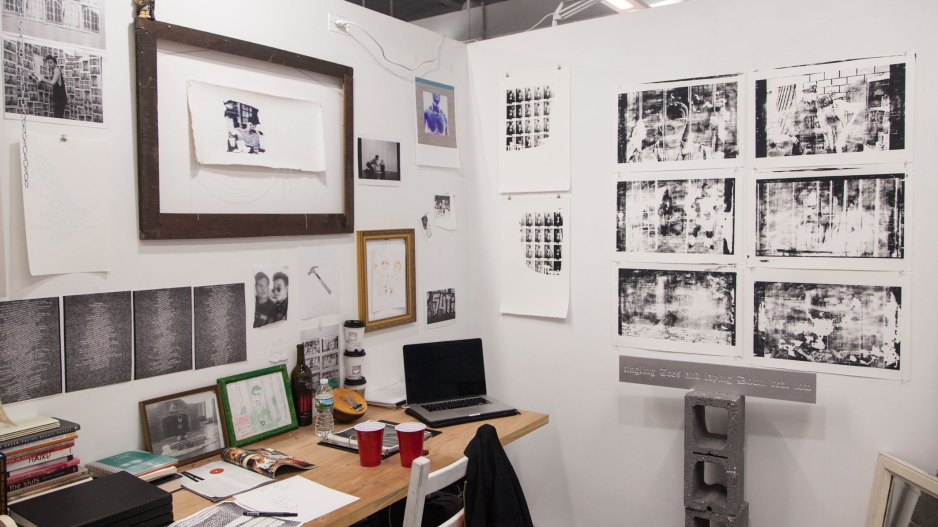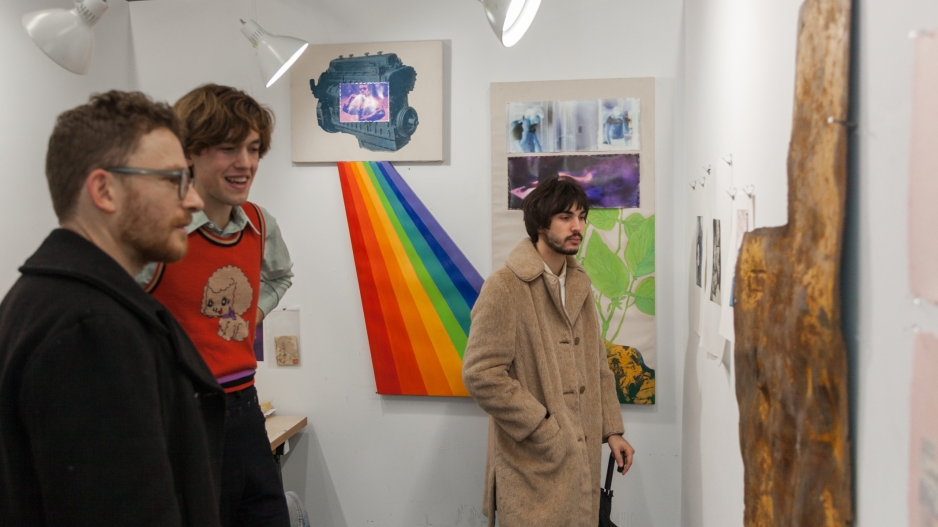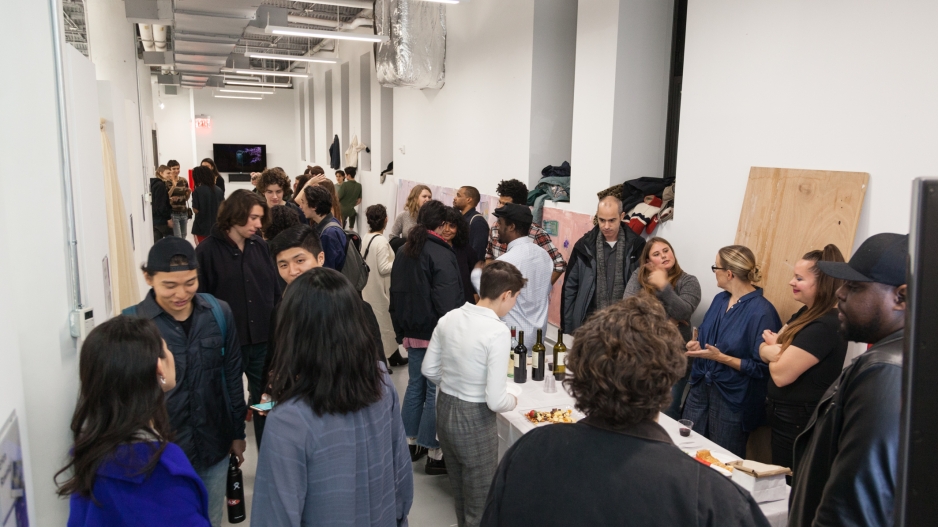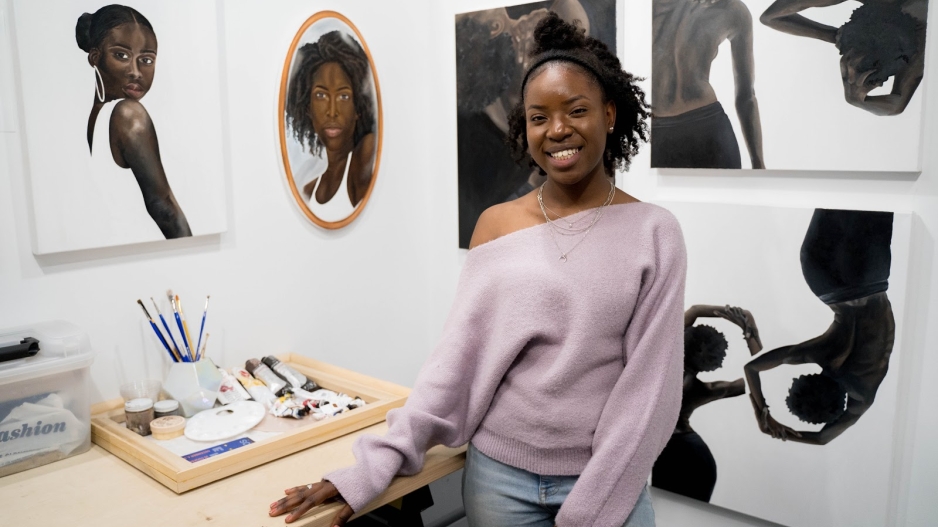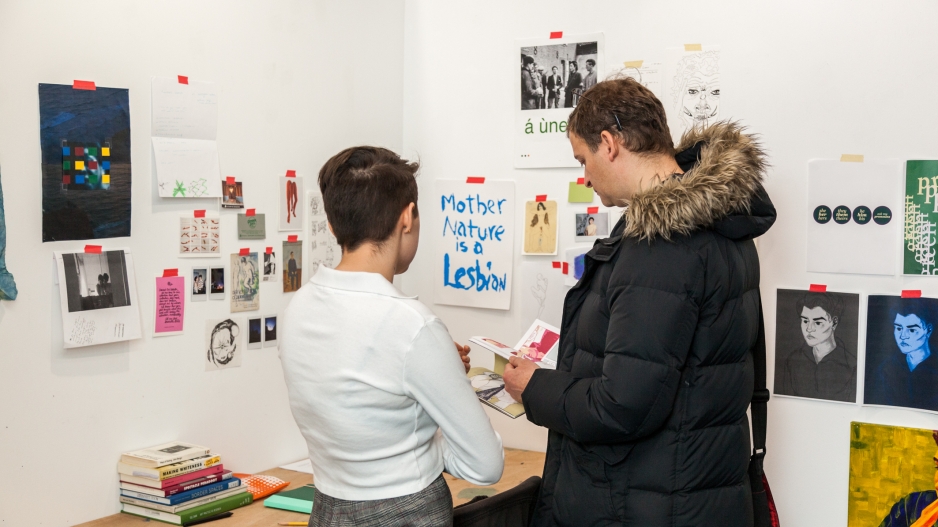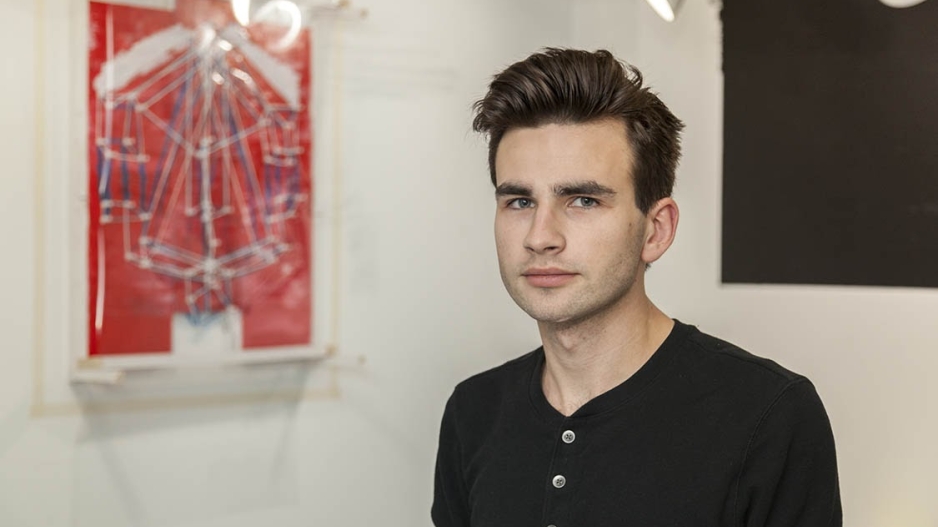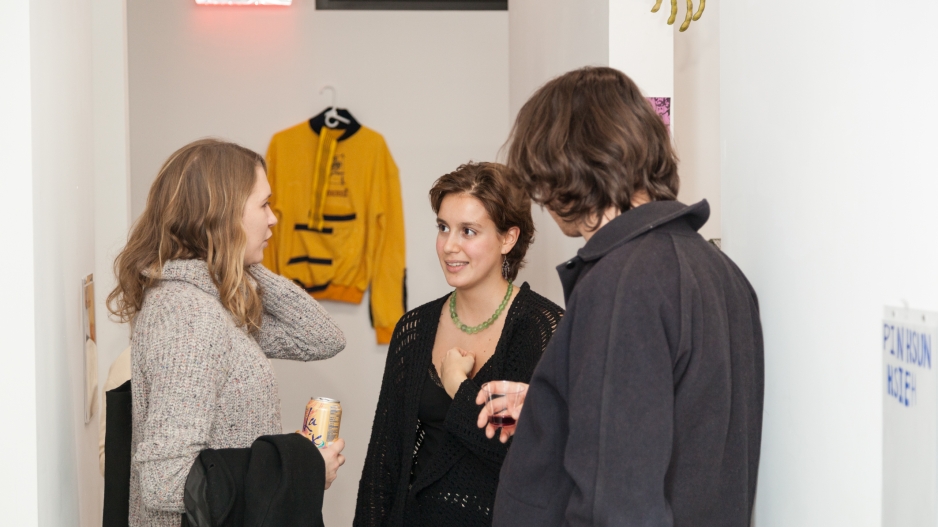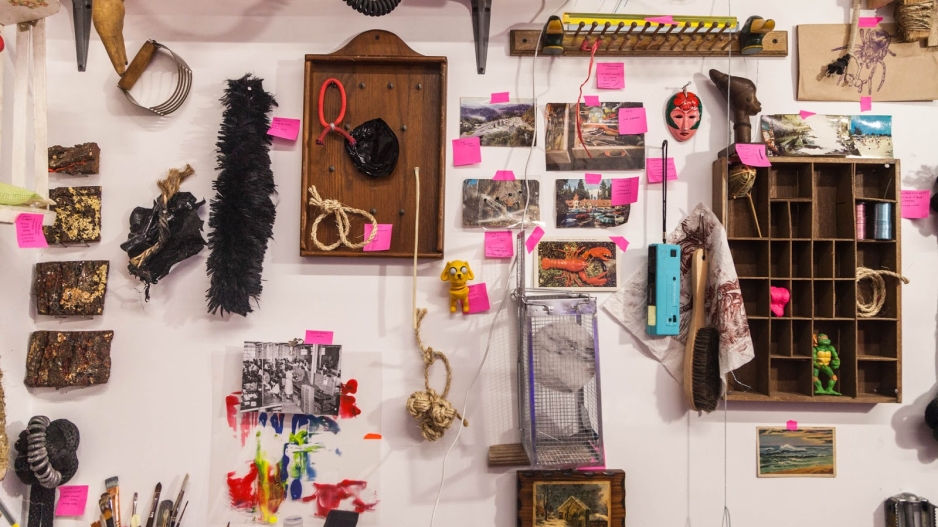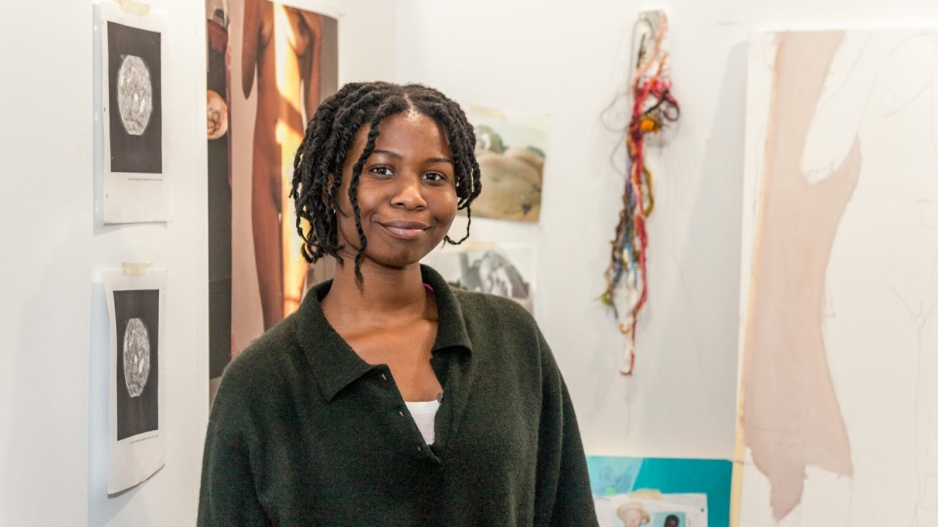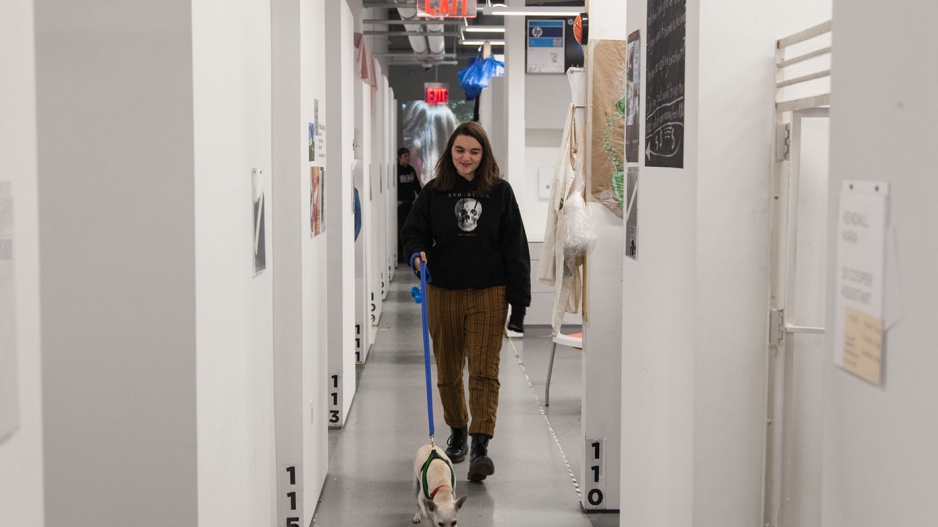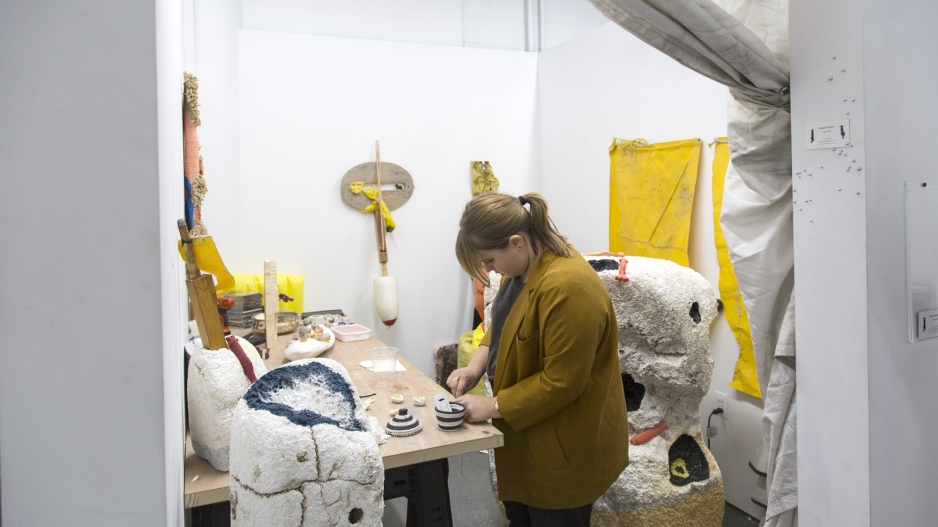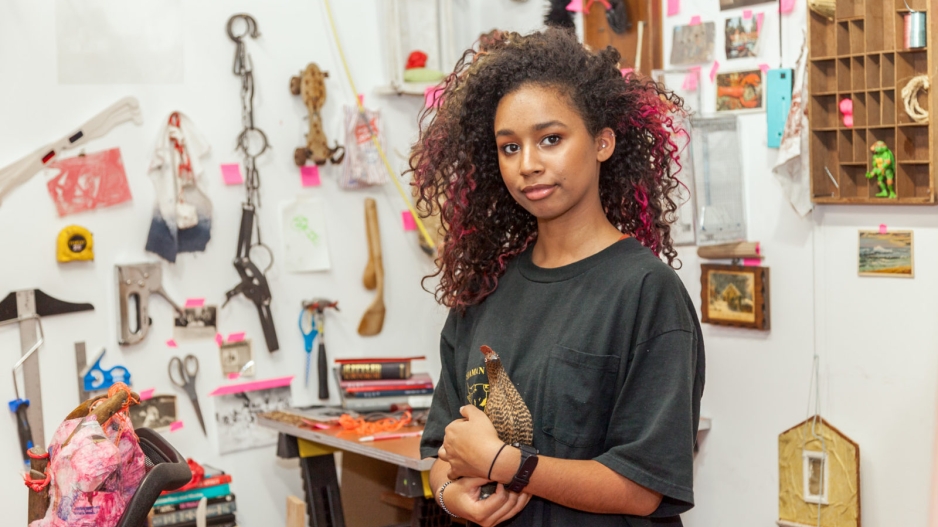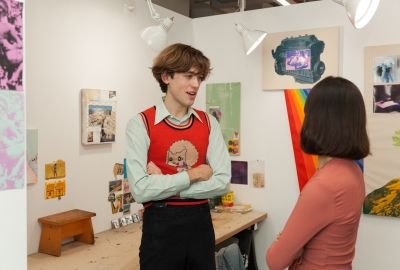
Senior Studio is a year-long course that every BFA candidate enrolls in for the final year of their undergraduate education. The emphasis of the class is to provide a concentrated, non-media-specific forum for students to receive rigorous feedback from faculty and peers as they push a body of work towards a spring semester thesis exhibition.
Senior Studio dovetails with every senior receiving a private studio in which to develop said work at their own pace without the interruption of the shared spaces they've grown accustomed to working in. Throughout the semester students are expected to be working extensively in their studios, putting in, at minimum, 25 hours a week.
Senior Studio I
There are four faculty mentors leading the course: each one responsible for a group of around 12-15 students. Throughout the semester, once a week, students meet rotationally either in a group setting for critiques, or one-on-one for individualized studio visits with their faculty mentor. Midway through the semester, the students are responsible for reshuffling themselves into four different groups that will represent the curation of the spring thesis exhibitions, as well as their groups for Senior Studio II. The fall semester culminates in a presentation by each of these new groupings wherein they propose the outline of their upcoming exhibition.
Senior Studio II
Whereas the fall component of this course is dedicated to the galvanizing of each artists' individual practice, inarguably, the crux of the momentum of SeniorStudio II is the drive towards the culminating thesis exhibition series.
For the spring semester, students are divided among four faculty members by thesis exhibition groupings. Each professor will be in charge of mentoring one exhibition from start to finish -- closely working with their group both in the studio as works develop and finalize; in the curation of works included in the show, as well as in the overall design of the exhibition.
For the first part of the semester, students will meet one-on-one with their faculty mentors in the format of private studio visits, as well as meeting regularly as a group in order to make decisions about the overarching thematics of their exhibition, and to hammer out logistical planning. Students will also be expected to meet one-on-one amongst themselves in order to gain a better sense of each others' practice. Writing reflections on each others work as a result of these one-on-one visits and sharing the texts is highly encouraged. In addition to the voices of their professor and their peers, students will be privy to a host of other private studio visits throughout the semester by other distinguished department faculty, as well as a curated list of visiting artists, curators and writers culled from the New York City art world at large.
Each exhibition group is expected to build a scale model of the gallery space in order to assist in planning a proposed layout of their show in advance of installation. Each show group will be required to come up with a title for their exhibition and to co-author a thoughtful press release that ties their works together. If interested, each show group is encouraged to plan supplemental programming to augment the presentation of their exhibition. In the past this has taken the form of performances, screenings, and panel discussions. The emphasis will be on the students to conceive of and organize said programming, but their faculty adviser will be able to assist with the logistics.
Most importantly, students are expected to present an ambitious and thought-provoking body of work of their own genesis to be installed with professional foresight within the context of the gallery space, and that plays dynamically off the work of their peers in ways that is both visually and conceptually enriching for the viewer.

